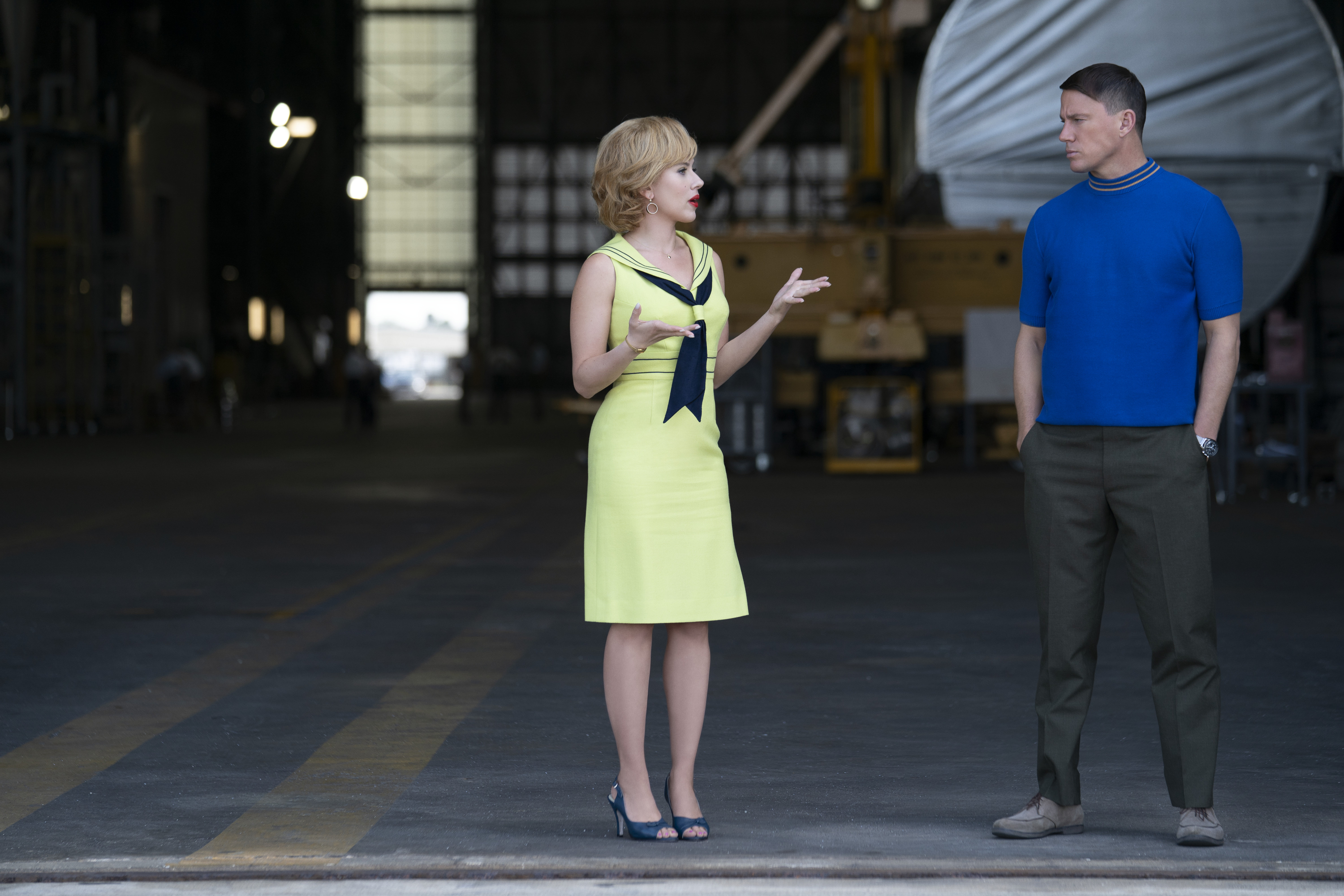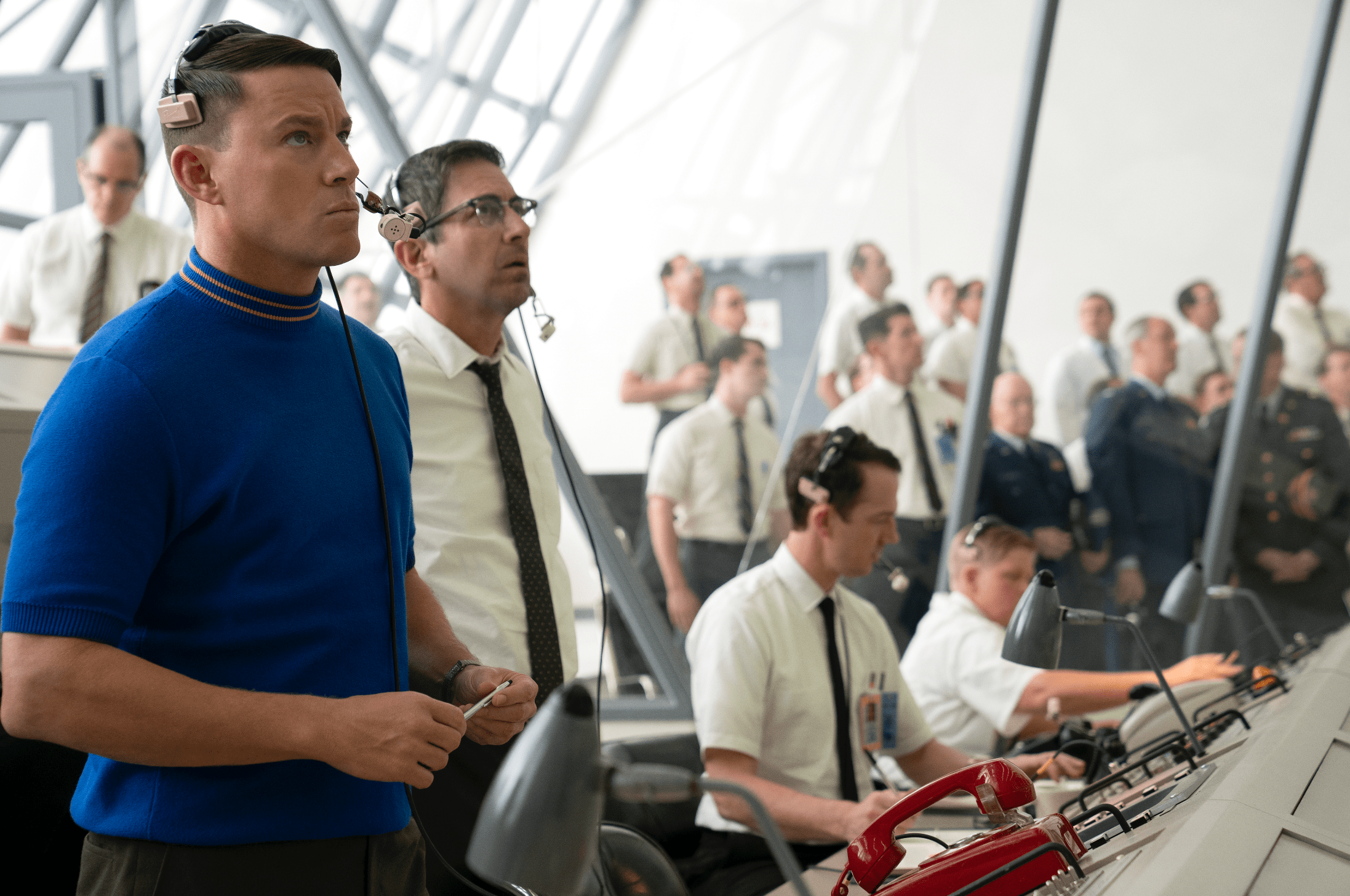Separating Truth From Fiction in ‘Fly Me to The Moon’
In the walk-up to the 55th anniversary of the history-making Apollo 11 mission on July 20, Hollywood is hoping that a new movie about NASA staging a fake version of the moon landing will take off at the box office.
In Fly Me to the Moon, launching in theaters July 12, a Nixon White House aide (Woody Harrelson) sends NYC ad executive Kelly Jones (Scarlett Johansson) to NASA’s Kennedy Space Center in Florida to oversee a fake version of the first moonwalk on a sound stage in case the real version doesn’t pan out. The idea is that the U.S.—then in the middle of the Cold War with the Soviet Union—can’t afford to fail. The White House wants the American people to see a win, and so goes full steam ahead in its race to be the first country to send a man to the moon more than a decade since the communist nation sent the first artificial satellite into orbit in 1957.
People leaving the theater after Fly Me to the Moon may have two questions: Was there really a PR maven hired to “sell” the moon to the American people? And did the U.S. government really stage a fake moonwalk in case the actual Apollo 11 mission didn’t go to plan? Here’s the real history that inspired the movie.
The real PR for the moon landing
To be clear, the government did not hire a PR maven to oversee the filming of a fake moon landing in case it could not pull off the mission.
“There was no special effort to ‘sell’ the Apollo program—especially not one aimed at raising funds for the agency either directly or indirectly,” Bill Barry, NASA’s chief historian from 2010 to 2020, who consulted on the script, tells TIME.
Of the roughly 400,000 people who worked on the moon mission, about three-quarters of those people worked for private contractors, who were providing services that they were allowed to market, according to Richard Jurek, co-author of Marketing the Moon: The Selling of the Apollo Lunar Program.
“They were the ones who built up NASA’s press kits and did advertising campaigns,” Jurek tells TIME. “They had to get NASA’s permission to do it, but they themselves were doing those [advertising] campaigns.”
It’s true that the astronauts wore Omega watches because the devices withstood all kinds of tests in different weather conditions. In the movie, Jones is approaching companies like Omega to set up marketing campaigns, but that’s not how it would have happened. The movie also implies that money from sponsorship deals was helping pay for the Apollo 11 mission, but that also did not really happen, according to Jurek.
<figure class="block h-auto w-full inline-image self-center max-w-full" arial-label="media" data-block="gutenberg-custom-blocks/inline-image" data-media-size="special_small_2x" data-original-width="3000" data-original-height="2000" data-original-src="https://api.time.com/wp-content/uploads/2024/07/Fly-Me-to-The-Moon-Image-9-In-Cinemas-July-11.jpg?quality=85" data-caption="Kelly Jones (Scarlett Johansson) and Cole Davis (Channing Tatum) in Fly Me to the Moon.” data-credit=”Sony Pictures” data-copyright=”© 2024 CTMG, Inc. All Rights Reserved.
**ALL IMAGES ARE PROPERTY OF SONY PICTURES ENTERTAINMENT INC. FOR PROMOTIONAL USE ONLY. SALE, DUPLICATION OR TRANSFER OF THIS MATERIAL IS STRICTLY PROHIBITED.**” data-sizes=”(max-width: 768px) 90vw, (max-width: 1024px) 75vw, (max-width: 1280px) 55vw, 800px”>
It is stipulated on NASA’s website that “as a government agency, NASA will not promote or endorse or appear to promote or endorse a commercial product, service, or activity.” So sponsorships were definitely not part of the Apollo 11 PR campaign, Barry notes. Some astronauts have endorsed products, but only after they were no longer on NASA’s payroll.
“Among the NASA employees that I talked with about the script, this was the thing that caused the most laughs,” says Barry. “In dealing with the public in any form, I was regularly reminded by our legal folks that giving even the appearance of an endorsement for a commercial product would get me in big trouble.”
The real head of NASA’s public affairs division in the walk-up to the Apollo 11 moon landing was a journalist named Julian Scheer. He oversaw a team of ex-journalists who helped the news media cover the space program and profile the staffers and astronauts. Scheer was the one who insisted the first steps on the moon be broadcast on live television. In contrast to the Soviets, who did not let journalists in on the inner workings of the space program, NASA allowed their staffers and astronauts to speak freely.
In the walk-up to the moon landing, the PR gurus at NASA were largely concerned with what NASA would tell the world if the astronauts died during the mission, so countless statements were prepared that never got used. Once the Apollo 11 astronauts safely returned to the moon, NASA’s PR focused on convincing the public that the space program was still necessary to go back to the moon and explore other planets. As Jurek puts it: “Most people view NASA as just existing to get astronauts to the moon. So once we did that, it’s like, ‘Okay, now what?’”
The origins of the moon landing hoax theory
When it comes to the idea of a staged moonwalk being filmed, the answer is a little clearer. To most, at least.
“There’s no evidence whatsoever that NASA ever faked a moonwalk,” says Barry.
It’s true that there was a space race between the U.S. and the Soviet Union. American leaders feared that if the Soviets got to the moon first, then the communist government would be seen as the superior form of government, compared to the United States’ democracy. However, nothing suggests that the U.S. were so desperate in their mission that they contemplated faking a moon landing for the American public.
Yet, conspiracy theories persist today, with some doubting the successful Apollo 11 mission involving astronauts Neil A. Armstrong, Michael Collins, and Edwin E. “Buzz” Aldrin took place at all. There are people who falsely believe that NASA staged the first moonwalk. Barry points out that if the U.S. faked the moon landing, the Soviet government would have been all over that.In fact, Soviet scientists did not question the legitimacy of the feat. The U.S. was also working with countries across the world to communicate with the Apollo spacecraft.
With that said, despite all of the physical rock samples brought from the moon and analyzed by a consortium of highly-respected scientists, a small minority of Americans still think that there was no way NASA had the budget or the time to fulfill President John F. Kennedy’s pledge to put a man on the moon by the end of the decade. One 2021 University of New Hampshire poll found 10% of Americans believe NASA did not land on the moon.
<figure class="block h-auto w-full inline-image self-center max-w-full" arial-label="media" data-block="gutenberg-custom-blocks/inline-image" data-media-size="special_small_2x" data-original-width="2194" data-original-height="1456" data-original-src="https://api.time.com/wp-content/uploads/2024/01/Screenshot-2024-07-11-at-19.31.18.png" data-caption="Channing Tatum (Cole Davis) and Ray Romano (Henry Smalls) portray key NASA staffers in Fly Me to the Moon.” data-credit=”Sony Pictures” data-sizes=”(max-width: 768px) 90vw, (max-width: 1024px) 75vw, (max-width: 1280px) 55vw, 800px”>
“There’s only one week in the 1960s when everybody was in favor of spending more money on the space program—over 50% of Americans. That’s the week we landed on the moon,” says Barry.
According to Peter Knight, author of Conspiracy Culture: From the Kennedy Assassination to “The X-Files,” the conspiracy theory that the moon landing was a hoax can be traced back to a self-published 1976 book We Never Went to the Moon: America’s Thirty Billion Dollar Swindle by Bill Kaysing, a former U.S. naval officer. The basic premise is that NASA couldn’t make JFK’s deadline so they sent astronauts into Earth’s orbit and staged a moonwalk in a film studio. To some, Kaysing’s military credentials made it seem like he had some kind of inside knowledge.
The book also fit with the culture of the times. The 1970s marked the beginning of years of decline in trust of the U.S. government—between the bungled Vietnam War and Watergate scandals. Conspiracy theories about the sudden assassination of JFK in 1963 had been swirling for years.
“For many people, there was a feeling that the government had been lying,” Knight tells TIME. “That’s the context in which the Kaysing book comes out.”
The 1978 fictional film Capricorn One, about NASA staging a fake Mars landing, only fanned the flames. And then Kaysing’s ideas gained popularity in the 1980s among “flat-Earthers,” conspiracy theorists who falsely believe that the Earth is flat. Over the years, his false theory spread through talk radio, zines, books, and gun shows in the era before social media.
Moon landing hoax conspiracy theories may be more widespread among Russian citizens than U.S. citizens. A 2020 Russian Public Opinion Research Center poll found half of Russians believed the 1969 moon landing never took place. Offering an explanation as to why the moon landing hoax conspiracy theory endures among some Americans, Knight says: “A lot of people felt if we can’t cure our problems at home, what are we doing trying to engage in some kind of fantasy idea of space exploration? So I think the conspiracy theories speak to some of those concerns.”
When asked whether a movie featuring a staged moon landing could make people wonder if the entire moon landing was a hoax, Barry says he believes anyone who sees the movie will see right off the bat that the film is not a documentary, but a clear parody of conspiracy theorists and a romantic comedy. And for the skeptics, there is plenty of online evidence that “we did land on the moon, not just once, but six times.”


